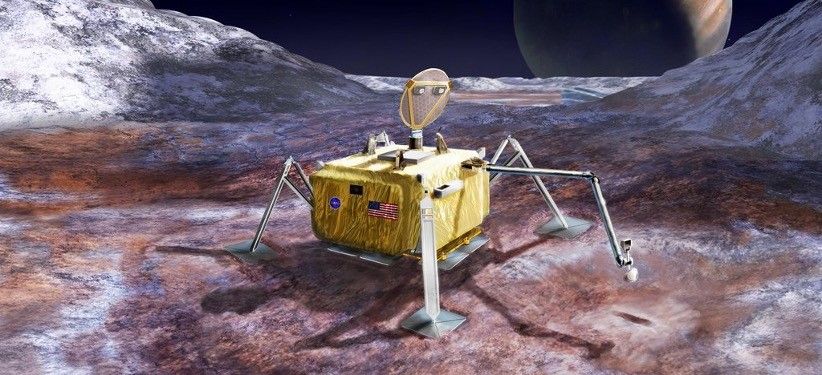Advancing Robotic Exploration: Researchers Push Boundaries with OceanWATERS Testbed
Two groundbreaking research projects, ARROW and COLDTech, are leveraging the OceanWATERS testbed to develop cutting-edge autonomous capabilities for future space missions. This innovative platform provides a realistic environment for testing and refining new robotic technologies that aim to solve some of the most pressing challenges in space exploration.
ARROW: Programming Flexibility for the Next Generation of Rovers
The ARROW projects draw inspiration from the adaptability of the human brain, injecting flexibility and adaptability into robotic control systems. Jonathan Bohren at Honeybee Robotics is leading the development of Stochastic PLEXIL (SPLEXIL), enhancing the existing PLEXIL language with powerful stochastic decision-making capabilities.
“We’re extending PLEXIL with reinforcement learning techniques, allowing robots to make decisions based on probabilities and learn from experience,” explains Bohren.
Pooyan Jamshidi of the University of South Carolina is developing a suite of software tools for the RASPBERRY SI project, aiming to equip rovers with advanced reasoning capabilities. This includes fault root cause identification, causal debugging, causal optimization, and causal-induced verification. These tools will enable rovers to diagnose and recover from malfunctions autonomously, minimizing the need for human intervention and maximizing mission uptime.
“Our goal is to create robots that can think like detectives, swiftly identify the root cause of problems, and implement solutions without relying on constant human guidance,” says Jamshidi.
Both SPLEXIL and RASPBERRY SI will be rigorously tested in the OceanWATERS environment, ensuring they can handle the complexities and uncertainties of real-world planetary exploration.
COLDTech: Building Robust Robots for Icy Moons
Focusing on the challenges posed by icy moons like Europa and Enceladus, the COLDTech research program is pushing the boundaries of autonomous robotic operations in extreme cold environments.
Eric Dixon at Lockheed Martin is leading the CARL project, integrating a model of JPL’s mission-ready Cold Operable Lunar Deployable Arm (COLDarm) into the OceanWATERS testbed. CARL focuses on overcoming the difficulties of operating robotic arms in freezing temperatures, where ice buildup can disrupt locomotion and impede scientific operations.
“By combining image analysis, causal reasoning, and machine learning models, CARL can identify and mitigate the root causes of faults caused by ice buildup,” explains Dixon.
Jay McMahon of the University of Colorado is tackling the challenge of autonomous exploration with the REASON-RECOURSE project. This project focuses on maximizing science return from lander missions while minimizing communication with Earth.
“We’re developing advanced automated planning techniques with formal methods to enable landers to make intelligent decisions about where to go and what to investigate, even with limited communication bandwidth,” says McMahon.
Melkior Ornik from the University of Illinois, Urbana-Champaign, is leading the DRILLAWAY project, which aims to teach robots to adapt to unfamiliar terrains and select the best scooping actions. The team is transferring scooping procedures learned in a lower-fidelity testbed to the high-fidelity OWLAT testbed, demonstrating the potential for robots to transfer their knowledge across different environments.
Joel Burdick at Caltech is developing autonomous capabilities for sample site selection with the REASIMO project.
“Our focus is on creating robots that can autonomously detect and identify off-nominal conditions, recover from those conditions, and select the most promising sites for collecting scientific samples,” Burdick states.
By combining advanced hardware with innovative software, the COLDTech projects are contributing to the future of robotic exploration in some of the most challenging and scientifically valuable environments in our solar system.
The OceanWATERS and OWLAT testbeds are proving to be v
aluble tools in streamlining the development and refinement of these sophisticated robotic systems, paving the way for a future where robots can explore the cosmos with unprecedented autonomy.
* What are the main challenges that the OceanWATERS testbed aims to address in the exploration of icy moons?
## Advancing Robotic Exploration: A Chat with an Expert
**Host:** Welcome back to the show! Today, we’re exploring the exciting world of robotic space exploration with Dr. [insert expert name here], a leading researcher in autonomous systems for space exploration. Dr. [Expert Name], thanks for being here.
**Expert:** My pleasure, it’s great to be here.
**Host:** Let’s dive right in. The OceanWATERS testbed is generating a lot of buzz. Can you tell us what makes it so special?
**Expert:** Absolutely! OceanWATERS is a groundbreaking virtual environment that allows us to simulate the challenges of exploring icy moons like Europa and Enceladus. It provides a safe and controlled setting to test cutting-edge robotic technologies before they’re sent into the harsh realities of space([[1](https://science.nasa.gov/science-research/science-enabling-technology/technology-highlights/towards-autonomous-surface-missions-on-ocean-worlds/))).
**Host:** That’s incredible! And what kind of technologies are being developed using OceanWATERS?
**Expert:** There are two fascinating projects in particular: ARROW and COLDTech. ARROW is focused on enhancing the intelligence and adaptability of our rovers. They’re creating systems inspired by the human brain, which can learn from experience and make decisions in uncertain environments. Think of robots that can not only follow instructions but can also think like detectives, identifying and solving problems on their own!
**Host:** That’s remarkable! And what about COLDTech?
**Expert:** COLDTech specifically addresses the challenges posed by freezing temperatures and icy terrains. They’re developing robotic arms
and systems that can operate effectively even in extreme cold, overcoming issues like ice buildup and limited mobility.
**Host:** This sounds like science fiction becoming reality! What are the potential implications of these advancements for future space missions?
**Expert:** These technologies will be crucial for future missions to icy moons, paving the way for us to explore these potentially habitable worlds in a more efficient and autonomous manner. Imagine rovers autonomously navigating complex terrains, conducting scientific experiments, and even discovering signs of life, all without constant human intervention.
**Host:** Truly groundbreaking work! Thank you, Dr. [Expert Name], for sharing your insights with us today!
**Expert:** It was my pleasure.




